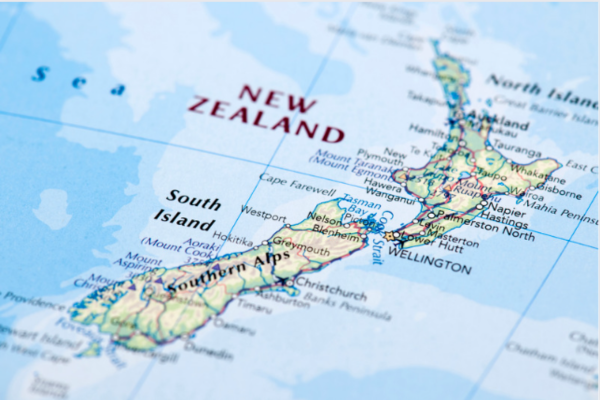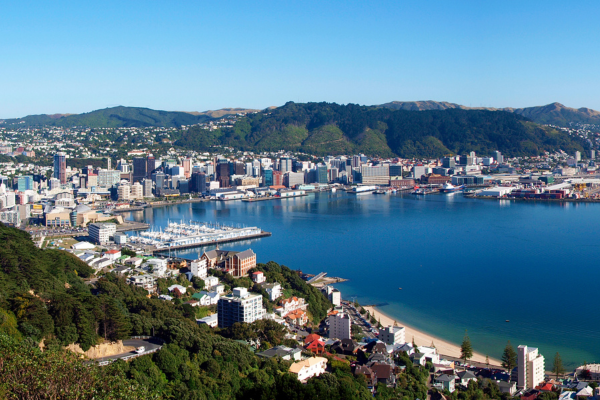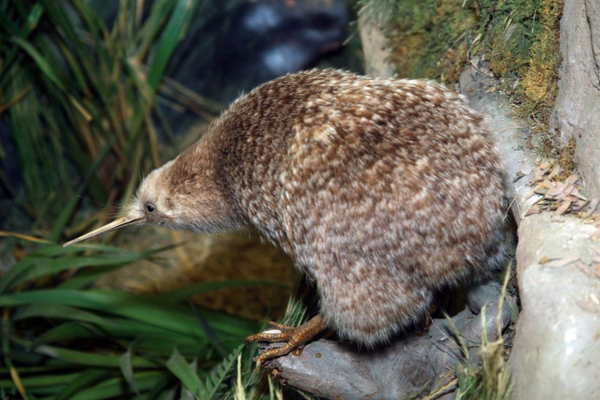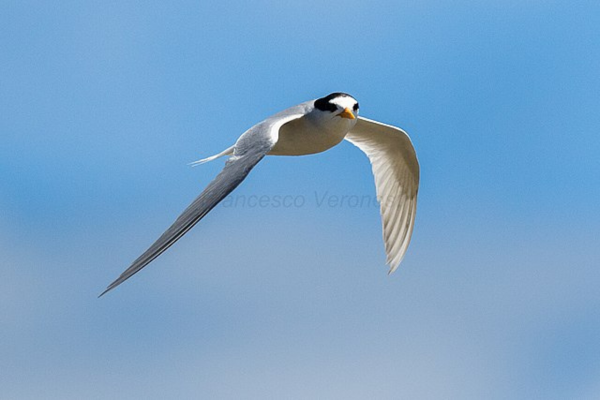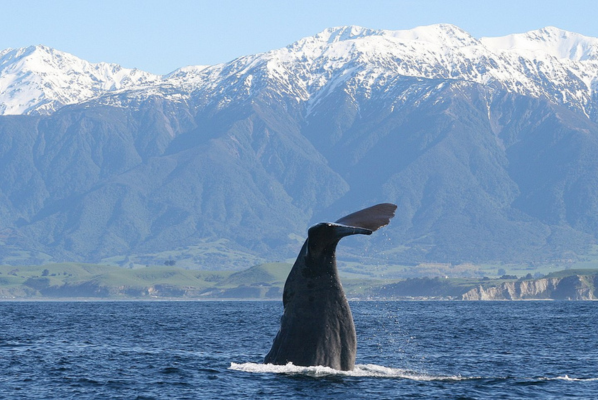Learning Guide
Episode: Kiwi Land
Grade Levels
4-7
Subjects
Language Arts, Science, Social Studies, Social Emotional Learning, Art, Media Literacy
Grade Levels
4-7
Subjects
Language Arts, Science, Social Studies, Social Emotional Learning, Art, Media Literacy

Claudia Robin Gunn is a performer, song-writer and educator whose music is inspired by and has evolved with her children.
Kia ora! This show is jammed-pack with information about and music from New Zealand. We hope you enjoyed listening to our interview with Kiwi guest artists and educators Lucy Hiku from Itty Bitty Beats
and Claudia Robin Gunn. They create fun and positive music for kids that encourages learning in areas of culture, science, animals, and so much more! Complete the activities below to learn more about the people, animals, places, and culture of New Zealand.

Singer, song-writer, and educator Lucy Hiku is part of Itty Bitty Beats who have been making music since 2014.
Extinct
when a species is no longer in existence and has no more living members
Endangered
to be seriously at risk of going extinct
Vocabulary
Vocabulary words can be found throughout the page in bold.
Archipelago
An area that contains a group of islands that are closely scattered together in a body of water and often considered a single place.
Landscapes
the visible features of an area of land, and its landforms, such as bodies of water, mountains, volcanoes, hills, valleys, etc.
Geographical Isolation
when there are physical barriers that exist that keep species apart
New Zealand is Kiwi Land
New Zealand is an archipelago, or an area that contains a group of islands that are closely scattered together in a body of water and often considered a single place. Located in the southeastern Pacific Ocean, there are three main islands, North, South, and Stewart Island, and around 600 tiny islands.
The first people to inhabit New Zealand were and still are the Māori people, who named the islands Aotearoa, which means “land of the long white cloud.” They call the North Island Te Ika-a-Māui, and the South Island Te Waipounamu. New Zealand has a complex history that includes eras where the lands were colonized and settled by people from other countries. This has led to a diverse population of people that today call New Zealand home.
New Zealanders may often refer to themselves lovingly as “Kiwi’s” based on the national animal, the Kiwi Bird. This flightless bird is native to the islands and is very important to the people who live there. According to Māori legend, the Kiwi bird is blessed by Tane Mahuta – God of the Forest because the Kiwi bird courageously volunteered and sacrificed their wings in order to guard and protect the trees of the forest. This legend has helped them to become the most well known and most loved bird of them all. These birds make a sound like kii-wee, which helped contribute to their name. Interestingly, the Kiwi fruit was named after the bird for having similar looking brown fuzzy skin.
As we learned from our guests, New Zealanders are very friendly people and come from diverse backgrounds. Most of the population lives in the capital city of Wellington, or in the largest city, Auckland.
New Zealand is special for many reasons, due to its location on the globe, it is the first country to see the sunrise every day, and the seasons occur in the opposite months as those in the United States and Europe.
Activity: Mapping New Zealand
New Zealand is full of diverse geography and culture. Use an atlas resource to help you complete the checklist and fill out this map activity.
New Zealand’s Climate and Environment
New Zealand is unique in that it has a huge variety of landscapes. Landscapes are the visible features of an area of land, and its landforms, such as bodies of water, mountains, volcanoes, hills, valleys, etc. We heard from our guests about the unique landscape of New Zealand, including on the North Island, how there is more of a warmer and subtropical climate, whereas in the South Island, there is more snow and a cold climate. The weather constantly changes in New Zealand since it is surrounded by the ocean. On a single day it might start out sunny and winds will blow and bring on a strong storm. New Zealanders are used to always being prepared for extreme changes in weather.
The variety in landscapes of New Zealand also allows for so many different types of activities to enjoy. Some that were suggested by our guests include visiting beaches such as Golden Bay on the South Island, hiking, and biking in forests and mountains, and swimming in rivers, lakes, and oceans. On the North Island, you can visit Lake Taupo, a giant lake that was formed after a volcanic eruption. The water is warm due to geothermal activity which heats the water like a hot spring, and you can sit in a stream that’s bubbling like a spa pool. You can also go water skiing on the lake.
The landscape also promotes farming and raising livestock. As Katie mentioned, there are five times as many sheep as people in New Zealand, with around 26 million sheep and only about 5 million people!
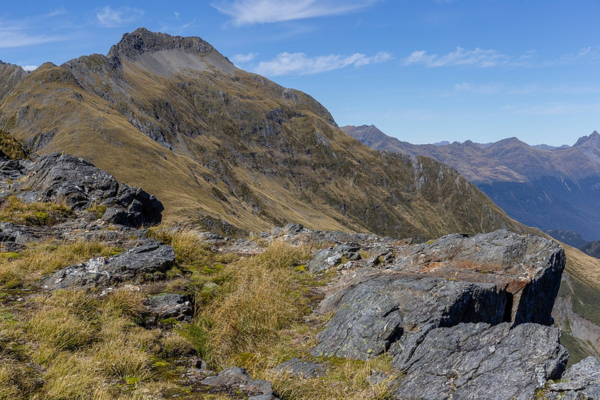
New Zealand has a unique geography, with a lot of mountainous landscape.
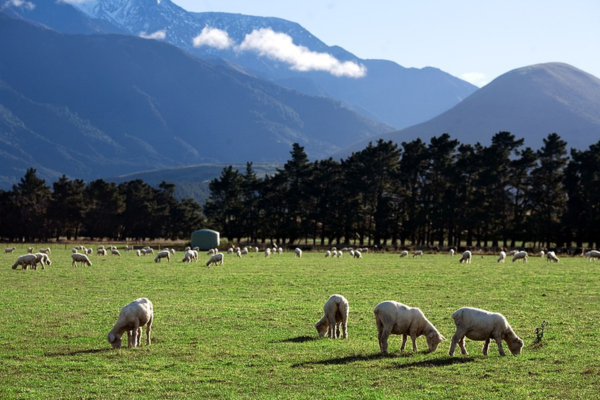
Activity: Postcard from Kiwi Land
Imagine that you get to travel to New Zealand and you want to send a postcard to a friend about your trip. Research more about activities you can do out in nature and create a postcard that tells your friend about the day you had in New Zealand, talk about what you saw, what you did, where you went, and what the weather was like. Include an image on one side and text on the other. Create one by hand or digitally.
Māori Culture
The first people to arrive in New Zealand were the Māori, they first discovered and settled in New Zealand sometime between 1250 and 1300. To reach the islands to settle, they made incredible advancements in engineering boats, navigating oceans, understanding weather patterns, having knowledge of astronomoy, and so much more.
Not only did they make these great achievements in math and science but they also have made incredible achievements in the arts, language, and teaching of thier cultural knowledges. Our guest, Lucy, who’s husband and children are Māori shared interesting information about their culture. She mentions that they have meetinghouses called marae, where people gather together and have special occasions. Performing arts and rituals are extrememly important to the Māori. One of the most famous rituals is the haka, which is a display of strength, performed often before sporting events. Another important area of performance includes dancing and music, the Māori created instruments including rakau sticks, and poi balls, that help them make rhythms for music and dance. Check out this video to see how this is done.
They hold an important role as the original inhabitants of the islands of New Zealand. They invite all visitors to care for New Zealand, its land and animals just like they have for many years. The concept of Tiaki means to care for people and places. Learn more about this concept and how it impacts the children of New Zealand in this video.
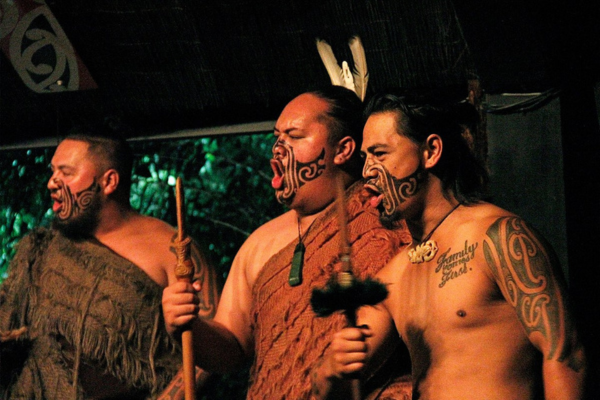
The Haka is a tradition of the Māori people. It is a fierce display of a tribe’s pride, strength and unity. Image source
Challenge: Learn Te Reo Māori
Te Reo Māori is the language of the Indigenous people who live in New Zealand. We learned some words in our show including kia ora, a greeting that expresses “have life, be healthy”, tiaki, which means “to care for people and places”, wayata, which means “song”, and aotearoa “the land of the long white cloud.” Challenge yourself to learn more through this great resource.
Wildlife of New Zealand
The wildlife of New Zealand is extremely unique, due to geographical isolation, which is when there are physical barriers that exist that keep species apart. For example, the water and distance between a species isolated on an island keeps it from being affected by or breeding with other animals. This resulted in New Zealand having animals that are incredibly unique.
The original animals that have evolved in New Zealand are mostly birds, who were able to access the island by flying, but when the Māori people and European settlers came on boats, they brought along dogs, cats, and rats to the islands. These introduced mammals were predators to the Indigenous species. In addition, deforestation and draining of swamp land took away the natural habitats of the wildlife. As a result, populations of wildlife were devastated. In the last 1,000 years, half of all animals on the islands have become extinct, which means they are no longer in existance and have no more living members.
However, New Zealand conservationists are now working to help threatened wildlife recover, using island sanctuaries, where they put endangered (at serious risk of going extinct) species onto islands with no predators, utilizing pest and rodent control, wildlife translocation, and breeding programs that encourage mating and new life.
These strategies all require a lot of community, government, and business support. Together the people of New Zealand and across the globe work to save species such as the Kiwi bird, from extinction.
Challenge: Bring back to life: extinct animals of New Zealand
As we learned from the music and interviews on our show, there are many things that people can do to help preserve and protect the wildlife of New Zealand. Art is an amazing tool to do this. Your challenge is: select an animal from New Zealand that has gone extinct using this resource. Then, create a piece of art that brings the memory of that animal back to life. You may create a painting, drawing, poem, song, sculpture or any other artistic medium of our choice.
Media Journal: Kiwi Land
Watch and Learn
After watching one or both of the videos, use the guiding questions to reflect on what you learned. Share your information with another person.
What did I already know about this topic?
What did I learn from the video?
What new questions or wonders do I have?
More Activities and Resources
Visit the city of Christchurch on the South Island through this video.
Learn more about the promise of Taiki, from kids of New Zealand in this video made by New Zealand Tourism.
Hike along with this family as they explore the enormous Kauri Trees of New Zealand, including Tāne Mahuta.
Explore the beautiful landscapes of South Island, New Zealand in this episode of Outside Beyond the Lens.
Resource for learning and teaching the Māori language, includes a dictionary, animations, videos, podcasts, and more!
Primary Sources on Māori Culture in Colonial New Zealand.
Take a virtual field trip to the boundary of the Asian and Pacific plates to learn about the awesome forces that shape the landscape of New Zealand.
Explore this interactive photo map of New Zealand.
Learn the original Indigenous Māori names of Aotearoa with this place names map.
Check out this interactive resource and glossary to learn about volcanoes of New Zealand.
©2024 The Children’s Hour Inc., All Rights Reserved.

